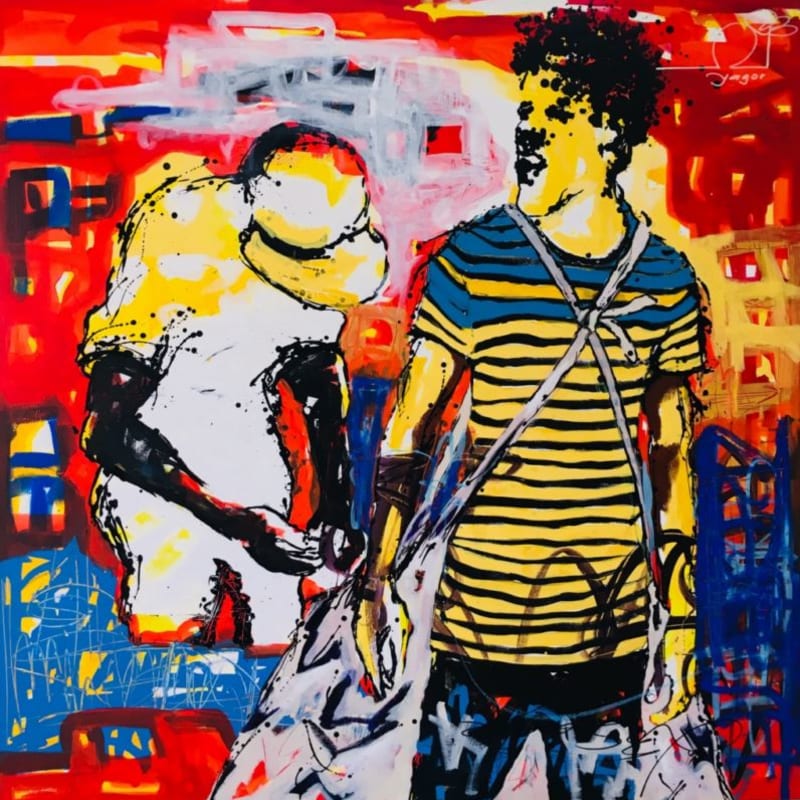The reserved N’Guessan Essoh, born in 1956 in Dabou, Côte d’Ivoire, began his formal artistic training by following the path of the Vohou-Vohou movement. He studied with Gérard Santoni, who taught mural painting at the École de Beaux-Arts in Abidjan, and earned his Dîplome d’Études Supérieur in 1994.
Inspired by his mentor Santoni, who is known for paintings with the large bands of indigo and red found in Baoulé pagnes, N’Guessan Essoh’s art reflects his cultural traditions; he pours colors one after the other onto cloth or tapa (the pounded bark traditionally used to make clothing), in order to obtain a layered texture, recalling that of the woven raphia cloth, which conferred prestige and dignity on its wearer.
After initially working in figurative painting, N’Guessan Essoh turned toward abstraction, demonstrating a perfect command of color theory. The originality of his work is linked to the craft of tapestry, which he draws on in his deployment of velvety texture, waves, and rhythmic variation.
As a teacher, rather than encouraging his student to follow in his footsteps, N’Guessan Essoh cultivated and encouraged the development of Yagor’s own creative style, helping him to become an independent and original artist. What both artists share is a passion for the chromatic.
Yagor—whose given name is Romaric Igor Yao—was born on April 13, 1981, in Grand Bassam, Côte d’Ivoire. He graduated from the Institut Supérieur des Arts et de la l’Action Culturelle (INSAAC) in 2008.
Yagor’s simply drawn figures are framed so as to command our attention, his primarily frontal compositions dominated by the violence of broken lines. The figures appear in a timeless landscape, swathed in solitude. Like “lost children, without collars" they search through Abidjan’s garbage dumps, filling their black bags with the treasures they find, symbols of their salvation. The color black is omnipresent, outlining silhouettes and underlining the dramatic nature of lives lived in consumer society.
LouiSimone Gallery is happy to present these recent creations by N’Guessan Essoh and Yagor, which call on us to reflect on the socio-economic factors of our society. Both artists proceed through a similar ethical process, one that incites each individual to recognize the cardinal values that characterize us and to focus our gaze on “the world as it is.”



